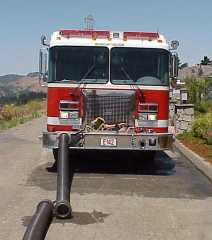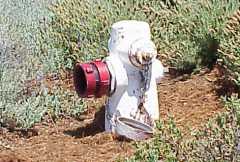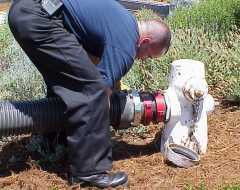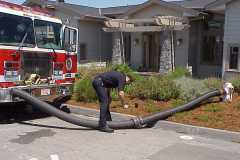© 2001 Capt. Willis Lamm, Water Supply Officer, Moraga-Orinda (CA) Fire District |
The following procedures are examples of low water pressure evolutions based on the procedures of the Moraga-Orinda Fire District, presented for illustrative purposes.This is a ridgeline of high elevation. The one hydrant in the area is connected to an 8 inch main. It has an average static pressure of only 8 psi with an available flow at normal head pressure of about 500 GPM. However by using hard suction, flows of about 1250 GPM can be obtained.
From this hookup about 1250 GPM can be delivered. Return to Drafting from Low Pressure Hydrants IndexReturn to Water Supply IndexBack to Information Section |
|
Unless otherwise noted, all contents of these WWW pages © 1996-2002, FireHydrant.org |



